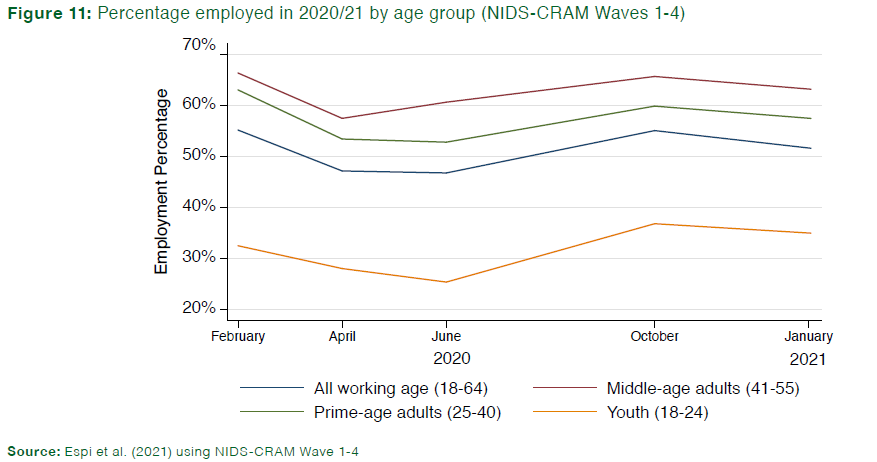Critical employment news South Africa faced during the year 2021

The second wave of COVID-19 infections and the subsequent lockdown at the beginning of 2021 resulted in net job losses and considerable labor market churn, as highlighted in the latest National Income Dynamics Coronavirus Rapid Mobile Survey (NIDS-CRAM). This study, carried out by a consortium of 30 social science researchers from various local universities, as well as organizations like the Human Sciences Research Council and the Department of Education, provides in-depth insight into how the pandemic and lockdown affected South African households, particularly in terms of income and employment.

According to the survey, from October 2020 to January 2021, the percentage of employed adults (ages 18-64) in the NIDS-CRAM sample fell from 55% to 52%. This decline was mirrored across all age groups, with a reduction of two to three percentage points. Despite this, significant churn in the labor market continued, with roughly one-fifth of individuals employed in October being unemployed by January, and another one-fifth of those previously unemployed finding work. Job-finding rates were similar across different age groups, though job losses were more pronounced among younger workers. Youth (ages 18-24) experienced job losses that were more than double those of middle-aged adults (ages 41-55) and much higher than prime-age adults (ages 25-40). Specifically, youth saw a 31% job loss rate, compared to 13% for middle-aged adults and 19% for prime-age adults.
The researchers noted that, although there was a worsening in employment and transition outcomes due to the second wave of infections and stricter lockdown measures, the declines in employment were relatively smaller compared to the devastating effects of the initial level 5 lockdown in April 2020. The study also revealed that women were disproportionately affected by the pandemic’s economic impact. After controlling for factors like individual and household circumstances, it was found that women were more likely to lose their jobs, and less likely to benefit from new job opportunities compared to men. For instance, 70% of women who were employed in February 2020 still had jobs in January 2021, compared to 78% of men. Additionally, only 19% of women who were unemployed before the pandemic had found employment by January 2021, compared to 31% of men.
This gender disparity was not explained by regional, educational, age, race, marital status, or household composition factors. Women were also more likely to work in sectors that were hardest hit by the crisis. This may be due to fewer opportunities for women to transition into other available roles, as well as a potential lack of skills or training for emerging job opportunities. The survey further found that workers who were able to work from home were generally at an advantage during the lockdown, while employees in formal jobs were more likely to be unable to work from home compared to those in informal jobs. Certain sectors, such as mining, private households, manufacturing, and community, social, and personal services, were more likely to have employees unable to work from home, unlike those in financial services who had greater opportunities for remote work.